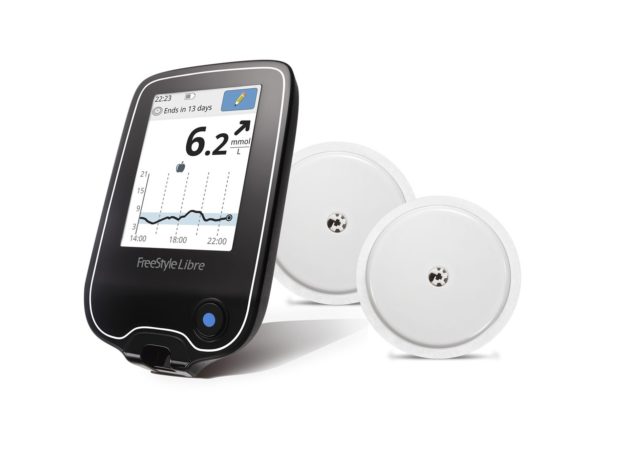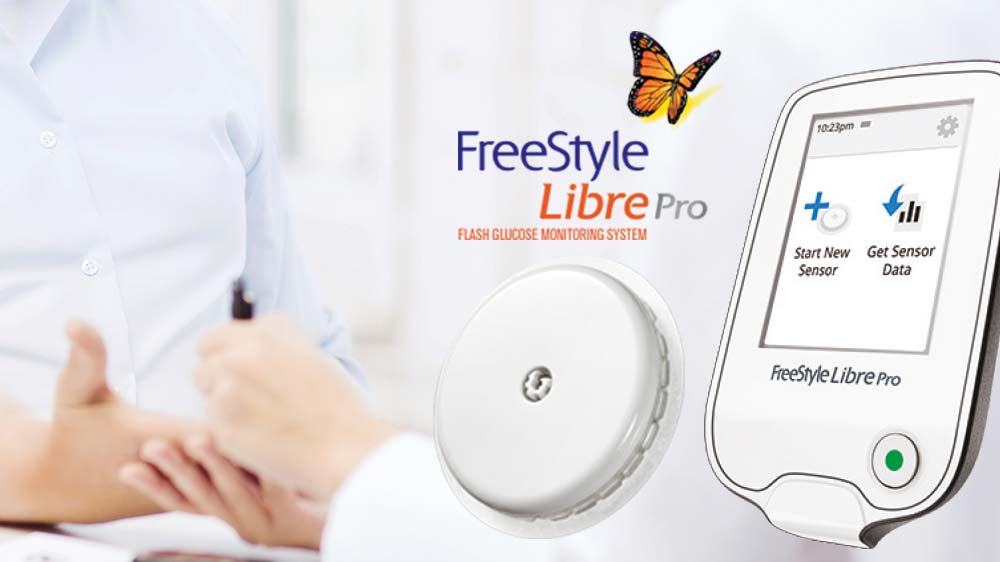

- Abby freestyle libre flash glucose monitoring system how to#
- Abby freestyle libre flash glucose monitoring system skin#
Healthline has strict sourcing guidelines and relies on peer-reviewed studies, academic research institutions, and medical associations. the possibility of blood glucose issues during sleep, in which the system won’t alert you (unless you’re using the Libre 2 or 3).possible spikes or falls in blood glucose that aren’t detected until you wave the monitor in front of the sensor.
Abby freestyle libre flash glucose monitoring system skin#
skin irritation from where the sensor wire is inserted.Some promising studies point to the FreeStyle Libre’s connections to a reduced risk of diabetes complications.įor example, a 2020 study found a 52% decrease in hospital visits for ketoacidosis in people with type 1 diabetes and a 47% decrease in those with type 2 diabetes.ĭespite its approval, the FDA still notes some risks associated with the FreeStyle Libre, including: But there have been reports of unusual fluctuations in glucose readings, especially during the last day of the sensor’s life. Overall, users appreciate the functionality and ease of use of the FreeStyle Libre. Such information is crucial to share with your doctor to help determine your diabetes treatment plan. For example, you may notice they’re stabilizing or trending upward or downward. When used over time, the monitor can also help you see patterns in your blood sugar levels. It can indicate either hyperglycemia, where your glucose levels are too high, or hypoglycemia, where your levels are too low. Like traditional blood glucose monitors, the FreeStyle Libre gives you information about your sugar levels. Now, you can wear it for up to 14 days at a time.

The original FreeStyle Libre allowed users to wear the sensor wire for up to 10 days before switching it out. You should check your levels at least every 8 hours. Since the FreeStyle Libre doesn’t have automatic alerts when your blood glucose is at dangerous levels, it’s important to set reminders to regularly check your monitor. Instead of checking your glucose several times a day with a finger stick, you wave the monitor above the sensor in your skin to check your levels anytime you wish. This process is said to be painless, but some users experience mild skin irritation. The sensor itself is about the size of a coin and is applied just underneath the top layer of your skin. To set up the FreeStyle Libre, you must first insert the sensor into your upper arm with an applicator that’s included with the set.
Abby freestyle libre flash glucose monitoring system how to#
Subject is unsuitable for participation due to any other cause as determined by the Investigator.Here’s a breakdown of how to use the monitor.Subject currently is participating in another clinical trial.Subject has concomitant medical condition which, in the opinion of the investigator, could interfere with the study or present a risk to the safety or welfare of the subject or study staff.Subject is on dialysis at the time of enrollment.Subject is known to be pregnant or is attempting to become pregnant at the time of enrollment.Subject has known allergy to medical grade adhesive or isopropyl alcohol used to disinfect skin.Subject has previously used a continuous glucose monitoring system to manage their diabetes within the last six (6) months.Subject and/or parent or guardian must be willing and able to provide written signed and dated informed consent and assent when appropriate.In the investigator's opinion, the subject and/or caregiver must be able to follow the instructions provided to him/her by the study site and perform all study tasks as specified by the protocol.Subject and/or caregiver must be able to read and understand English.Subject is currently using SMBG for managing their diabetes.Subject must have a diagnosis of type 1 or type 2 diabetes mellitus for at least 3 months prior to enrollment.Why Should I Register and Submit Results?.


 0 kommentar(er)
0 kommentar(er)
